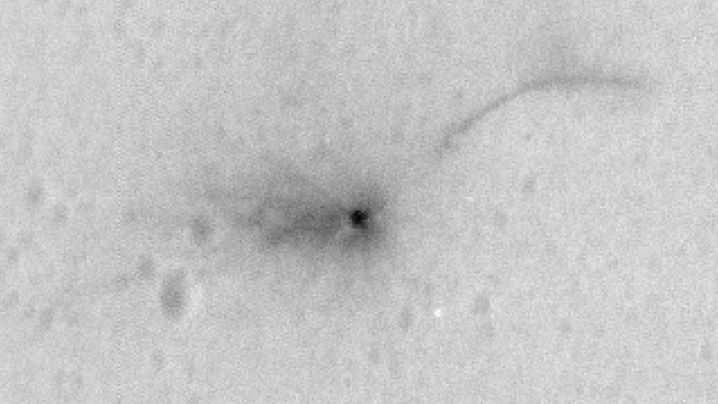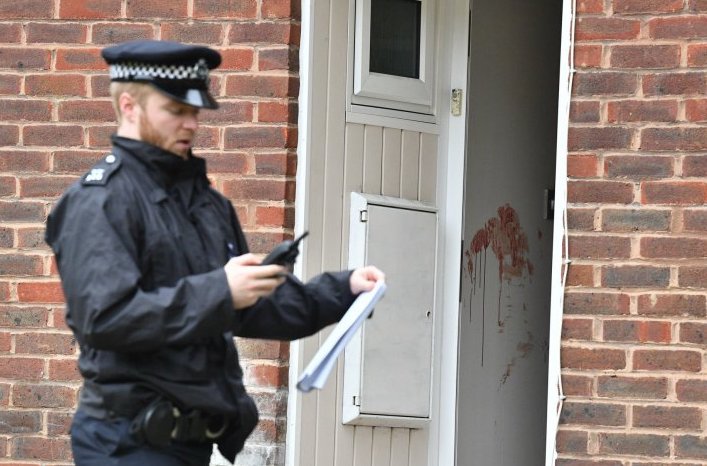New photos taken by a NASA satellite indicate that Europe’s experimental Mars lander created a shallow crater when it crashed on the surface last week.
The remains of a spacecraft sent to beam back data from Mars can be seen in new images captured by a Nasa orbiter, confirming fears that the lander appears to have been destroyed after crash-landing to the surface of the red planet.
The photo shows a craters almost eight feet wide and a longer dark streak thought to be linked to the impact and possible explosion.
The Schiaparelli probe had travelled for 365 million miles to reach Mars in a new push to gather data – including evidence of possible life on the planet.
Earlier in October the probe fell from a height of more than a mile after it ejected its parachute and switched off its retro-rockets (rockets fired in the direction of travel to slow the spacecraft down) too early, scientists from the European Space Agency (ESA) believe.
Contact with the probe was lost 50 seconds before its expected landing time.
The probe is thought to have crashed into the landing site near the Martian equator at around 186mph.
A white spot 0.9 miles south of the crater has been confirmed as the lander’s 39ft diameter parachute. It is still attached to the craft’s discarded rear heatshield, which can be clearly seen in the images from the high-resolution camera on Nasa’s Mars Reconnaissance Orbiter.
The front heatshield is around 0.9 miles east of the crash site.
A number of small white dots can be seen around the scene of the crash, however, they are not large enough to be identified properly and may or may not be related to the impact.
The Schiaparelli probe had been intended to test technology for a later rover planned for 2020.
However, the mission’s larger mothership, the ExoMars Rover, had successfully swung into orbit around the planet, where it will carry out tests to detect gases such as methane which could indicate the presence of life.













